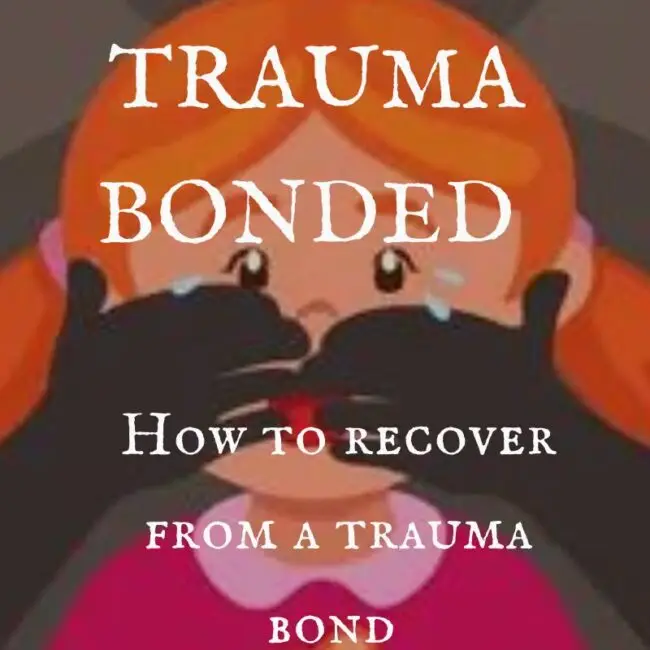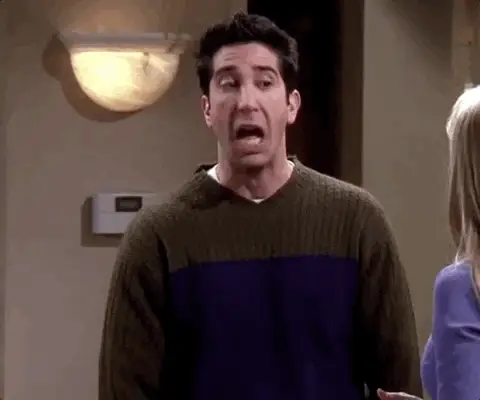ARE YOU TRAUMA BONDED ?
Plus tips to recover from a trauma bond

Trauma bonding has been greatly discussed and I think that is a great space to start from, so I wanted to add on some of the things I am continually learning about trauma bonding and dysfunction that can quickly be missed or dismissed.

Understanding the Vocabulary of Dysfunction
Trauma bonding is a strong emotional and enmeshment/attachment between an abused person and their abuser.
This enmeshment is a result of the cycle of violence emotional manipulation and or neglect.
Stockholm Syndrome is a survival Instinct where someone creates a bond with their abuser. Coined after an incident in Stockholm where a group of victims in a hostage situation developed empathy and connection to their captors because of the dissonance between the fact that they were being abducted but they were also being showered with affection and care within the confines of the abduction.
Gaslighting is when another person refuses your claim on how you experienced an event over and over again distorting your own reality.
The Loop of Trauma Bonding
Made up of four stages.
Love bombing – often happens at the beginning of the relationship. It is the flooding of love gestures and connection triggers. They tend to happen very quickly and intensely.
Love bombing can take a longer period than is expected. But in the end, it’s short-lived over the period of the relationship.
Tension building- this marks a very large part of the connection. The awareness that your partner lacks emotional regulation and that you may have to be extremely careful not to rock the proverbial boat because of stage number three.
Incident – this can be physical abuse, emotional neglect ( love withdrawal), silent treatment, or the huge conflict that happens because the boat finally gets rocked. The incident and the tension building are often a huge part of the relationship. They take up so much time as time goes on and so the extent of cortisol ( stress hormones) produced goes up.
Reconciliation – this is the restoration of connection. It connects back to love bombing. It creates a high of euphoria. Often it is over-glorified because so much love and connection are lacking.
Trauma bonding can be explained as the addiction to the hormonal and emotional rollercoaster of a dysfunctional relationship. Cause of the intensity of withdrawal during the tension-building and incident phase and the intensity ( however quickly short-lived) of the love bombing and reconciliation stages.
Gaslighting is when another person refuses your claim on how you experienced an event over and over again distorting your own reality.
THE SCIENCE OF LOVE
Love has existed from the beginning of time. It is an evolutionary survival-based emotion.
1. Love is created to improve our chances of survival – we are safer in herds and pairs. In the wild, it makes sense to be grouped.
2. Love is created to increase our ability for procreation. For the human race and our communities to continue, we require to replace the generation that is leaving.
Love being an automated response means it often requires the primal brain ( our old brain) and activation of our old brain means deactivation of our rational mind (pre-frontal lobe) responsible for cognitive, decision-making, and rational thought.
Therefore our brains had to quickly adapt to developing love.

MODERN LOVE may require a little bit more of a filter than just the occurrence of some neurochemical reaction in our brain.
Some literacy has to be added to it. So that when the neurotransmitters subside, there is a more specific thought process to allow the persistence of connection.
Most people grew up in normalized dysfunction. Where loud arguments, conflict, inconsistency, and even physical violence were categorized as normal.
Therefore C-PTSD and high ACE scores can increase the likelihood of the development of trauma-bonded relationships.
The truth though is, anyone is susceptible to love bombing especially when there is very little relationship literacy.
AM I TRAUMA BONDED?

At the end of all it, I believe it is a collection of the warning signs of trauma-bonded relationships.
1. Knowing you should leave, but feeling stuck and unable to leave.
2. Walking on eggshells around your partner.
3. Over romanticizing our experiences. We get overly amazed by the gestures of love because of the starvation that happens when it is withdrawn.
4. In overt cases of trauma bonding, our loved ones seem to have insight into you leaving the relationship.
5. Withdrawal from the relationship can cause intense sadness. This also is the reason why we desire to return because of the intensity of the pain.
6. Other romantic relationships pale in comparison especially healthy ones, they feel boring. When people leave trauma-bonded relationships, healthy seems boring.
7. Punishment by the partner through silent treatment, financial withdrawal, extreme outbursts of emotions, or even physical abuse.
8. An obsession with our partner or former partner. Cyberstalking, frequenting places they might be, etc.
And to conclude are the strategies to get out and heal from a trauma bond
1. Go to therapy.
Therapy gives you an avenue to vent honestly with validation and objectivity. A trauma recovery specialist ( insert) or exclusive programs curated for breakups and relationships can be helpful.
2. Detox
Go no contact. Trauma bonds cannot be handled like normal breakups. They need to be handled by no contact. It’s like drug addiction. A little ingestion just means a relapse.
3. Grieve
It hurts. It will hurt. It should hurt. A trauma recovery specialist will help you with coping tools to help you sit with your feelings and build resilience. One thing to remember is that just because it hurts so much now doesn’t mean it will last forever.
4. Journal
Write your feelings out. Doesn’t have to be great penmanship or even a pretty journal. Write down what needs to be written down. Which is everything. The program ( insert) has specific prompts for journaling.
5. Group counseling and Support groups
One thing that speeds up healing is joining a support group. Listening to stories of people who have gone through it and are on the other side.


